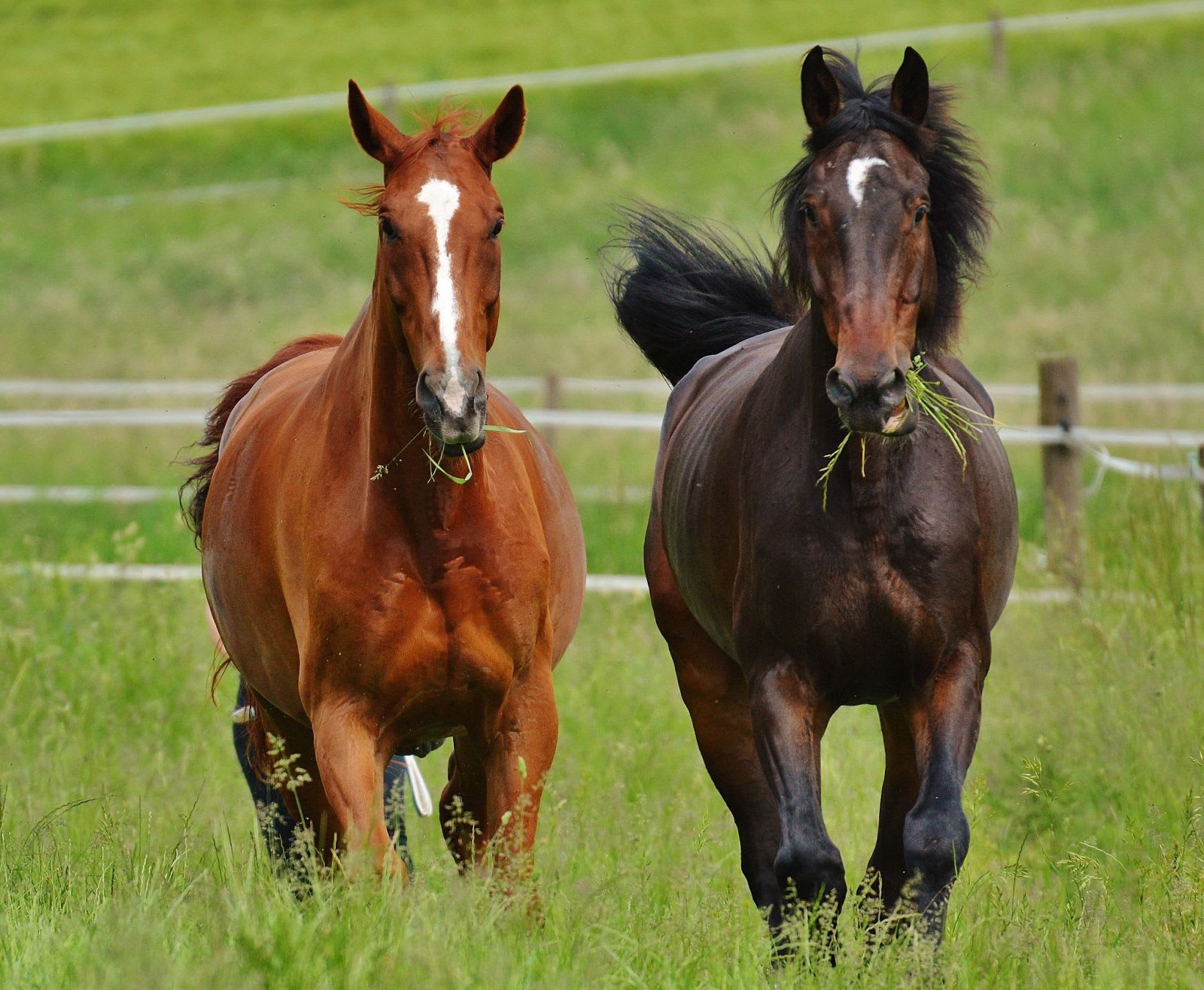
Learn the benefits and advantages of feeding your horses with slow feed hay nets.

The Slow Feed System
A horse's diet is based mainly on fibre. In the wild a horse will eat ‘little and often’ grazing throughout the day. This fulfills the horse's need to chew and maintains a healthy digestive system. The digestive system requires constant passage of food through it to maintain its efficiency. Lack of fibre in a horse’s diet can result in health related problems such as the onset of gastric ulcers.
Domesticated horses are taken out of their ‘natural environment’, often stabled for prolonged periods of time without access to forage. This can have a detrimental effect on a horse’s health as their digestive system will not be working efficiently. It is likely in this situation a horse will become bored very quickly which could lead to the development of vices such as cribbing, box walking, wind sucking etc…
In an ideal situation we would provide a horse 24/7 access to food so that they can eat ‘little and often’ for a healthy and happy horse. However this would soon lead to the horse becoming overweight which could have serious implications on its health causing illnesses such as laminitis to develop.
Vets classify horses on a scale of 1-5 with 1 being underweight through to 5 being morbidly obese. ILPH (International League for the Protection of Horses) stated the average horse a decade ago was rated a 2 or 3 but today the average is 4 with a 5 not being uncommon. This has lead to a rise in obesity related illnesses which include:
Heart and lung diseases
- A form of equine diabetes
- Laminitis
- Digestive disorders e.g. colic
- Respiratory problems
- Strain on joints
- Reduced performance levels
Obese horses are not to be starved however, as this can cause them to develop hyperlipemia, a condition where a horse’s fat reserves rapidly enter the bloodstream causing the liver to over-stress, often causing death. They need to be placed on a restricted, controlled diet.
Benefits and Advantages of Slow Feeding
- Often it is not practical for horse owners to return and top-up food levels for several hours overnight. Slow Feed Netting prolongs eating time and creates a worry free solution to this problem.
- When fields are bare and lacking in nutritive value Slow Feed Netting is a great way to feed extra hay in the field without the mess.
- When the days are short and stabled time is extended Slow Feed Netting helps your hay go further and reduces boredom for your horse.
- In the winter months Slow Feed Net is quick and easy to use; you can prepare Slow Feed Net in advance for a time saving solution.
- In the springtime when grass comes through and laminitis starts to rear its ugly head Slow Feed Net means you can regulate forage consumption and at least double the time it takes for your horse or pony to eat it.
- With the constant climatic changes we are faced with it is not uncommon for autumn grazing to receive a flush of new growth which can trigger weight gain and laminitis unexpectedly. By using Slow feed Hay Nets you can control the intake of food during stabled periods without worrying about excessive weight gain.
- When traveling to shows you can use Slow Feed Hay Nets and Bags in the trailer or horsebox without worrying about your horse or pony stuffing and gorging on the journey.
- When the weather is hot and your horses need to come in from the flies or sun, yet you want to keep their digestive system working, Slow Feed Netting allows you to do this.
- Horses and ponies that come in from the field having gorged on grass should not be starved; instead allowing them to nibble through their Slow Feed Nets keeps their system working without bloating even further.
- Equines that suffer from vices such as crib biting, box walking and weaving have benefited from using Slow Feed Netting as it allows them to constantly ‘graze’ and stay occupied.
Summary
 Less Waste:
Less Waste:
Slow feeder nets not only save dollars, but time and space to remove and dispose of the wasted hay.
Healthy Eating:
Slow feeding offers a healthier manner of feeding - slow delivery as opposed to the 'gorge' and 'starve' cycle which is hard on a horse's digestive system.
Less Work:
Much less maintenance for humans - reduce trip out to the feeders with arms full of flakes of hay, when one fill-up in the morning will last the day.
Hay Stays Put:
Loose flakes tend to travel more (kicked, dragged outside, blown away in the wind); the slow feed hay nets keeps the hay where you put it.
